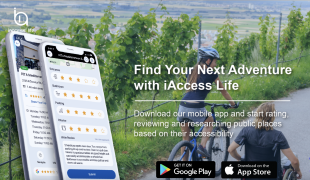- 3240
- 275
- 8
- 2
- 3
- Help Ukraine
About the solution
Mylo, still a 3D printing prototype, consists of a unique and inclusive games controller built to help disabled people improve their mental fitness and dexterity levels by people video games.
The device was the solution Billy came up with to help Jess work on her muscle memory and be more independent with some of her daily tasks. It is composed by a spinning dial, a microphone, speakers, light sensors and illuminated buttons to create a fun and interactive experience, whilst also improving the user’s motor skills, the speed in which they process information and also their hand-eye coordination. It connects to a smartphone or tablet via Bluetooth.
Mylo works by connecting to an app which features several games and helps users to replicate real-world situations such as turning a tap on or opening a jar to improve their muscle memory. The controller aims to encourage the user focusing more on the physical interaction rather than on the movements on the screen. For example, it features a twistable section that mimics the action of unscrewing a jar lid or turning a door handle.
Featuring also an inclusive component, the device was created so that both disabled people and people with no muscle movement disorders can be able to play together.
“I see the future for Mylo as being a device that people source for occupational therapy, as well as being a household object that the family can play with. The main ambition from this was to break down the barriers between able-bodied users and disabled users; because I think it’s something that developers of games controllers have neglected slightly”, the inventor expressed.
Billy is trying to get investors so that he can further develop his product and get a finished device.
Adapted from: https://bit.ly/2F9Z9ra
https://reut.rs/2wornKn
https://www.youtube.com/watch?v=D2bCM09K0M8
这些解决方案不应包括使用药物,化学品或生物制品(包括食品);创伤性设备;冒犯性的,商业或内在危险的内容。该解决方案未经医学验证。请谨慎进行!如果您有任何疑问,请咨询健康专家。
DISCLAIMER: This story was written by someone who is not the author of the solution, therefore please be advised that, although it was written with the utmost respect for the innovation and the innovator, there can be some incorrect statements. If you find any errors please contact the patient Innovation team via info@patient-innovation.com
-
-
680
-
0
-
12255

Helmet with multifunction tip
Video gaming
Writing (letters, songs, peoms)
Cerebral Palsy
Assistive Technology access
Body-Worn solutions (Clothing, accessories, shoes, sensors...)
Tremors
Muscle cramps or spasms
Stiffness or rigidity (difficulty moving)
Muscle weakness
Trouble with fine motor skills (e.g., writing, buttoning clothes)
Promoting self-management
Managing Neurological Disorders
Promoting inclusivity and social integration
Caregiving Support
Neurology
Pediatrics
Portugal
-
-
-
284
-
0
-
2713

How a patient created an app to improve wheelchair mobility
MOVING IN A WHEELCHAIR: Moving using a wheelchair.
Attend Concerts/Performances
Traveling
Neuromuscular Disorders
App (Including when connected with wearable)
Muscle cramps or spasms
Paralysis of the legs and lower body
Muscle weakness
Numbness or tingling in the extremities
Restoring mobility
Promoting self-management
Managing Neurological Disorders
Promoting inclusivity and social integration
Preventing (Vaccination, Protection, Falls, Research/Mapping)
Raise awareness
Caregiving Support
General and Family Medicine
Neurology
United States
-
-
-
451
-
0
-
6001

Man develops web browser for his autistic grandson
CAREGIVING
Autism
Asperger's Syndrome
Assistive Technology access
Assistive Daily Life Device (to help ADL)
App (Including when connected with wearable)
Irritability or anger outbursts
Restlessness or feeling slowed down
Promoting self-management
Managing Neurological Disorders
Promoting inclusivity and social integration
Caregiving Support
Medical Genetics
Neurology
United States
-
 zh
zh
Subhan • Sat, 05/11/2019 - 08:33